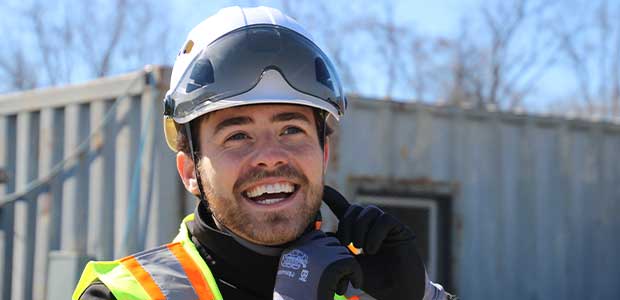
Watch for Falling Objects: PPE to Protect You on the Jobsite
Accidents happen when you least expect them; here is some PPE to consider when working with heights.
- By David Ivey
- Jun 01, 2021
We all know the importance of protecting an employee working at heights; we routinely use PPE such as full body harnesses, self-retracting lifelines (SRLs) and lanyards for fall protection to prevent workers from being injured in a fall. But there is another kind of “fall hazard” that is dangerous to other workers on the ground, working underneath and around an elevated jobsite: falling objects.
Falling objects represent a serious hazard at American jobsites. The Bureau of Labor Statistics reported that 241 deaths were caused by workers being struck by falling objects or equipment in 2019. In construction alone, these types of accidents accounted for eight percent of all fatalities. Fortunately, there are common and inexpensive forms of PPE that can protect workers from the most common sources of falling-object injuries.
Tool Lanyards
OSHA reports about 50,000 incidents each year involving workers being injured by falling objects such as tools and equipment. Head protection helps protect workers underneath, of course, but preventing these objects from falling in the first place can further help to prevent injuries.
On jobsites that involve working at heights, even the most innocuous items can become deadly projectiles. For example, in 2014 the New York Post reported the death of a worker at a construction site in Jersey City, N.J., who was fatally struck in the head by a tape measure that was accidentally dropped and fell 50 stories.
Tool lanyards allow you to tie hand tools to your belt, so you don’t inadvertently drop objects onto unsuspecting people below. Tool lanyards act much as fall protection lanyards do, securing your tools or equipment and preventing them from falling if dropped.
To use a tool lanyard, simply attach one end of the lanyard to any loose tool you will be using. The other end of the lanyard can be attached to your tool belt or around your wrist. Not only will this prevent dropped tools from becoming dangerous falling objects, but it also prevents you from losing tools you drop by tethering them to you. It’s convenient for you and safer for anyone below you.
Using tool lanyards every time you work with loose tools and equipment at heights is a great habit to form, because securing these loose items can help to reduce the painful statistics of injuries and fatalities caused by falling objects on worksites that we read about each year.
Safety Helmets
According to OSHA, around 1,000 workers die each year due to head injuries on the job. Of these, 84 percent of fatal head injuries are sustained by employees not wearing head protection.
Head protection is essential to protect yourself from falling objects whenever there is activity above you at a jobsite. Dropped tools, equipment or building materials can quickly build up deadly momentum when falling from even a modest height.
ANSI Z89.1, the standards for industrial head protection, categorize hard hats and safety helmets into two types: Type I and Type II. Type I head protection is intended to reduce the impact force of a blow to the top of the head. Type II head protection also reduces the force of a lateral impact from a blow delivered off-center or from the side or rear in addition to blows directly to the top of the head. Type I helmets are generally the lightest and least bulky, whereas Type II helmets contain more padding.
Make sure you’re using a safety helmet of the correct type for your application. If swinging objects are present at the jobsite or hazards may impact a worker from any angle other than straight above, consider a Type II helmet.
Another feature to consider for your safety helmets is the presence of a chin strap. As simple as it seems, a chin strap can save lives by keeping the helmet securely on during moments when a worker is most vulnerable, such as when bending over or during a fall. Some hard hats come with chin straps as well.
Importantly, a chin strap helps keep a worker’s head protection secure in case of a fall. Although properly worn personal fall protection equipment should arrest a worker’s fall in a stable and upright position, and proper fall clearance should be accounted for, improperly worn equipment or unforeseen obstructions could present a hazard. Having head protection securely fastened with a chin strap protects a fallen worker’s head from striking any nearby objects or surfaces if they somehow end up swinging or tipping unexpectedly during fall arrest.
Chin straps also prevent workers from losing their helmets when leaning over while working. A dislodged hard hat or helmet dropped from heights becomes a dangerous falling object itself. Securing your safety helmet with a chin strap can help prevent this dangerous irony.
Tool lanyards and safety helmets may seem unassuming, but these simple pieces of PPE prevent injuries and save lives. But PPE is only effective when it’s worn, which suggests it’s a good idea to get into the habit of using tool lanyards and safety helmets every time you work at a jobsite where falling objects are possible.
This article originally appeared in the June 1, 2021 issue of Occupational Health & Safety.